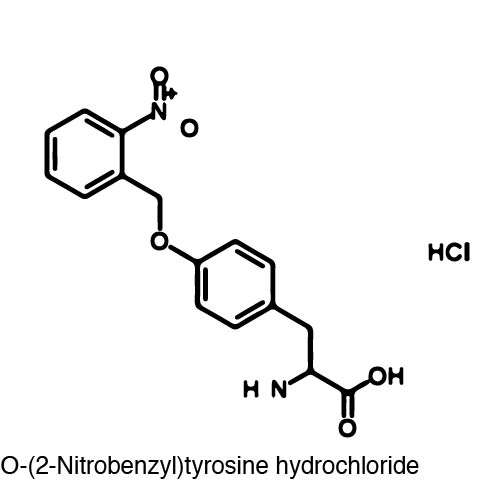Team:Austin Texas/photocage
From 2014.igem.org
(→Introduction) |
Nathanshin (Talk | contribs) (→Background) |
||
| Line 80: | Line 80: | ||
=Background= | =Background= | ||
| - | The tyrosine residue which is replaced by ONBY lies on a crucial position on the O-helix and has been proved to be essential for polymerization. The Tyr639 residue in the O-helix is responsible for two major roles. First, this tyrosine residue discriminates between deoxyribose and ribose substrates. Second, Tyr639 is responsible for moving newly synthesized RNA out of the catalytic site and preparing for the next NTP to be inserted. These functions of the O-helix were shown to be essential through mutational analysis. Because the loss of this tyrosine residue in the active site leads to a non-functional polymerase, Tyr639 proved to be a good candidate for incorporating a photocaged amino acid. | + | The tyrosine residue (Tyr639) which is replaced by ONBY lies on a crucial position on the O-helix and has been proved to be essential for polymerization. The Tyr639 residue in the O-helix is responsible for two major roles. First, this tyrosine residue discriminates between deoxyribose and ribose substrates. Second, Tyr639 is responsible for moving newly synthesized RNA out of the catalytic site and preparing for the next NTP to be inserted. These functions of the O-helix were shown to be essential through mutational analysis. Because the loss of this tyrosine residue in the active site leads to a non-functional polymerase, Tyr639 proved to be a good candidate for incorporating a photocaged amino acid. |
Because of the bulky nature of ONBY, its incorporation at position 639 essentially halted the activity of the T7 polymerase. However, the bulky ONB group is able to be removed through irradiation with 365 nm light. The wavelength of light used to "decage" the amino acid proved to be another advantage because 365 nm light is not toxic to the cell. Once the ONB group is removed, a normal tyrosine residue is left which restores RNA polymerase activity. | Because of the bulky nature of ONBY, its incorporation at position 639 essentially halted the activity of the T7 polymerase. However, the bulky ONB group is able to be removed through irradiation with 365 nm light. The wavelength of light used to "decage" the amino acid proved to be another advantage because 365 nm light is not toxic to the cell. Once the ONB group is removed, a normal tyrosine residue is left which restores RNA polymerase activity. | ||
Revision as of 21:32, 11 October 2014
|
 "
"


